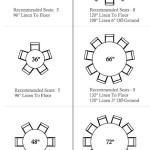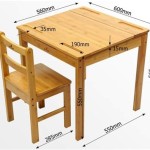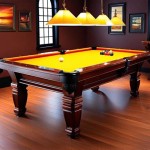The Enduring Appeal and Practical Considerations of Japanese Low Dining Table Height
The Japanese low dining table, often referred to as a *chabudai* or a *kotatsu* (specifically the heated version), represents more than just a piece of furniture; it embodies a deeply ingrained cultural tradition and a particular way of living. Its defining characteristic is its significantly lower height compared to conventional Western dining tables, a feature that dictates the posture, activities, and overall ambiance of the dining experience. Understanding the nuances of this unique furniture style involves exploring its historical roots, practical advantages, and the considerations necessary for integrating it into contemporary lifestyles.
Historically, the seated position was the norm in Japanese homes. The use of chairs and elevated tables is a relatively recent adoption, heavily influenced by Westernization. Prior to this shift, people lived primarily on tatami mats, engaging in activities such as eating, working, and resting directly on the floor. Consequently, furniture was designed to complement this floor-based lifestyle. The low dining table emerged as a natural solution, allowing individuals to comfortably access food and other items while seated on the floor or on cushions.
The traditional method of sitting is known as *seiza*, a kneeling posture with the legs folded underneath the body. While *seiza* is still practiced on formal occasions, modern adaptations often involve the use of *zabuton* cushions for added comfort, or even low stools and backrests specifically designed for floor seating. The low dining table height is intrinsically linked to these seating options, creating a cohesive and ergonomically sound environment.
Choosing to incorporate a low dining table into a home is a decision that requires careful consideration of several factors, ranging from spatial constraints and lifestyle preferences to physical comfort and the potential for adapting to a traditionally less-common posture. This article explores the key aspects to consider when exploring the possibility of adopting the Japanese low dining table.
Space Efficiency and Multipurpose Functionality
One of the most compelling arguments for adopting a low dining table is its inherent space-saving qualities. In smaller homes, apartments, or even shared living spaces, a standard-height dining table can often feel bulky and intrusive. A low dining table, on the other hand, occupies a significantly smaller vertical footprint, creating a sense of openness and airiness within the room. This is particularly advantageous in urban environments where maximizing usable space is a priority.
Moreover, low dining tables often possess a versatility that extends beyond merely serving as a dining surface. They can easily transform into a coffee table for casual gatherings, a workspace for creative projects, or even a platform for board games and other recreational activities. The low profile allows for a more intimate and relaxed atmosphere, encouraging interaction and engagement among those seated around it.
Furthermore, many low dining tables are designed with portability in mind. Some models feature folding legs or lightweight construction, making them easy to store away when not in use. This adaptability is particularly useful for those who need to quickly convert a space from a dining area to a living area, or for those who simply prefer to have the option of clearing the floor entirely.
The compact size also facilitates easy storage when not in use. Folding legs allow for the table to be neatly tucked away under a bed, behind a sofa, or in a closet, freeing up valuable floor space. This feature is especially appealing to individuals who prioritize minimalist living or those who frequently rearrange their furniture to suit different occasions.
The practical advantages of space efficiency and multipurpose functionality make the low dining table a particularly attractive option for individuals living in smaller homes, apartments, or shared living spaces. Its ability to seamlessly adapt to various activities and its ease of storage contribute to a more flexible and adaptable living environment.
Ergonomics and Posture Considerations
While the aesthetic appeal and space-saving benefits of a low dining table are undeniable, the ergonomic implications of prolonged floor seating are crucial to consider. Maintaining a comfortable and healthy posture while seated on the floor requires a degree of flexibility and core strength that may not be immediately accessible to everyone. It is important to consciously address the potential challenges and adopt strategies to mitigate any discomfort or strain.
The traditional *seiza* posture, while aesthetically graceful, can place significant pressure on the knees and ankles, especially for those who are not accustomed to it. Over time, this can lead to discomfort, numbness, or even joint pain. Therefore, it is essential to explore alternative seating options that provide adequate support and promote proper alignment.
The use of *zabuton* cushions is a common and effective way to alleviate pressure on the knees and ankles. These cushions provide a soft and supportive base, allowing for a more comfortable and sustainable seated position. Experimenting with different cushion thicknesses and densities can help to find the optimal level of support.
Furthermore, the introduction of low stools or backrests can significantly improve posture and reduce strain on the back. These supports encourage a more upright sitting position, preventing slouching and promoting proper spinal alignment. There are many commercially available options specifically designed for floor seating, offering varying degrees of lumbar support and adjustability.
It is also important to be mindful of the height of the low dining table in relation to the seated position. An excessively low table can force individuals to hunch over, leading to neck and shoulder pain. Conversely, a table that is too high can cause strain on the arms and wrists. Finding the right balance is essential for maintaining a comfortable and ergonomic posture.
Regular stretching and movement breaks are crucial for preventing stiffness and discomfort associated with prolonged floor seating. Incorporating gentle stretches that target the hips, knees, ankles, and back can help to improve flexibility and circulation. Standing up and walking around periodically can also alleviate pressure and promote overall well-being.
By carefully considering the ergonomic aspects of floor seating and adopting appropriate strategies to support proper posture, individuals can enjoy the benefits of a low dining table without compromising their comfort or physical health.
Aesthetic Integration and Cultural Harmony
The Japanese low dining table possesses a distinct aesthetic that can significantly influence the overall ambiance of a room. Its clean lines, minimalist design, and natural materials evoke a sense of tranquility, simplicity, and connection to nature. Integrating this furniture style into a contemporary home requires a thoughtful approach that respects its cultural origins while complementing the existing décor.
The choice of materials plays a crucial role in achieving a harmonious aesthetic. Traditional Japanese low dining tables are often crafted from natural wood, such as cedar, pine, or bamboo. These materials impart a warm and inviting feel, while also reflecting a commitment to sustainability. Opting for a table made from similar materials can help to seamlessly integrate it into a space inspired by Japanese design principles.
The color palette is another important consideration. Japanese design often emphasizes neutral tones, such as white, beige, and gray, as well as natural wood tones. These colors create a sense of calm and serenity, allowing the focus to remain on the beauty of the materials and the simplicity of the design. Incorporating these colors into the surrounding décor can enhance the overall aesthetic coherence.
The choice of accessories can also contribute to a more authentic and harmonious atmosphere. Simple ceramic tableware, linen placemats, and small potted plants can all help to evoke a sense of Japanese aesthetics. Avoiding clutter and embracing a minimalist approach is key to maintaining the sense of tranquility and simplicity that is characteristic of Japanese design.
The surrounding space should also be considered. Tatami mats, while not always practical for modern homes, can serve as inspiration for creating a floor-based living area. Using area rugs to define the dining space and incorporating low-profile furniture can help to create a more cohesive and integrated environment.
Ultimately, the goal is to create a space that feels both comfortable and aesthetically pleasing, while also respecting the cultural origins of the Japanese low dining table. By carefully considering the materials, colors, accessories, and surrounding space, individuals can successfully integrate this unique furniture style into their homes, creating a haven of tranquility and harmony.

Buy Solid Wood Japanese Style Low Dining Table With Breakfast Set In Latest Sets Collection Saraf Furniture

Japanese Low Table Google Search Dining Design

20 Trendy Japanese Dining Table Designs Furniture Sets Design Floor Seating

7 Low Height Dining Ideas Japanese Interior Design Table

Low Dining Table Floor Japanese

20 Trendy Japanese Dining Table Designs Room Small Living Rooms Floor Seating

Chabudai Wikipedia

A Japanese Dining Room At Home Decorating Visita Casas

Japanese Dining Table With Cushions Sounique Pk

Low Square Dining Table Japanese Chabudai Tatami
Related Posts








